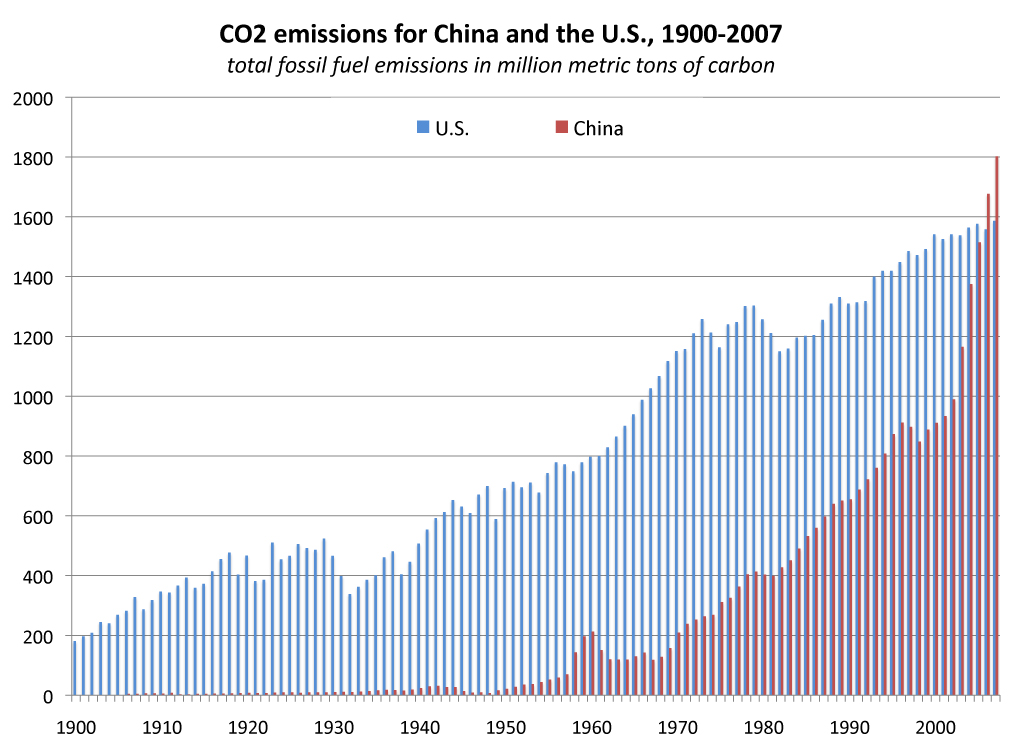It’s clear that any discussion of anthropogenic carbon emissions and future mitigation is not complete with China.
Historically, GHG emissions were driven by economic and industrial growth, which relied heavily on fossil fuels to meet energy demands. Although serious efforts have been made to shift the energy mix in favor of non-fossil fuels, nonetheless as of 2011, China still requires 50% more energy intensity to produce one unit of gross domestic product (GDP) than the US. Economically, China has enjoyed tremendous success; surpassing Japan as the world’s second largest economy in 2010. However, the tremendous growth has not come without costs. A World Bank study estimates 750,000 people die in China every year, as a result of burning coal. Recent cases of Chinese cities shrouded in dangerous levels of air quality, appropriately deemed the “airpocalypse”, and growing concerns for energy security have been the driving force behind the domestic push for GHG emission mitigation.
Reducing GHG emissions has been a top priority for Chinese policymakers, a pursuit that serves its own national interests. In a meeting with US secretary of State John Kerry, President Xi Jinping pointed out “China is making progress not at the others’ demand but [because of] our own will.” In addition to the more salient issues of air pollution and human health, other co-benefits should be considered, including:
- Economic Rebalancing. Focusing on the environment as a priority aligns with the shift from manufacturing to service-oriented industries. The political leadership views environmental considerations as an opportunity to increase the legitimacy of the Chinese Communist Party.
- Competitiveness. Developing the clean energy industry presents great opportunities for economic competitiveness. Great strides in both wind and solar energy technology in recent years illustrate their competitiveness in the global market. A study on green jobs in China projects the solar and wind energy industries will create 6,680 and 34,000 jobs annually between 2011 and 2020.
- Energy Security. Developing clean energy provides greater energy security and less reliance on finite resources or imports. Under current consumption patterns, China’s oil import requirements are projected to double from 2014 levels, account for 75% of demand and surpass peak US import levels by 2029.
- Climate Risk. China’s leaders are “increasingly acknowledging that climate change is real … and that it poses a significant threat to the country’s long-term prosperity in terms of already observable droughts, declining crop yields, damage from rising sea levels, floods, and increased extreme weather events.” Focusing on the environment addresses these concerns.
- Leadership. China has long desired to be seen as a leader among developing nations, environmental issues provide this opportunity to be seen as a leader in the international community.
Understanding these co-benefits to reducing GHG emissions can help open dialogue and create greater incentives to adopt mitigation strategies.

